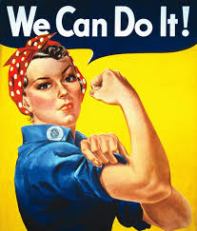Most will have only one death. I will have two.
This poem is a ballad, about a local infamous hero, Mary Webster, who was hung for the crime of witchcraft. At the time when the poem was set, people were obsessed with the thought of ‘witchcraft’ and had hatred for the independent female, claiming them to be witches. Miraculously, she did not die and survived until the morning where they found her alive. She could not be hung again as it was against the law to punish someone for the same crime twice. The poem is first person narrivite, in which Mary is reflecting on her memories of the incident, and is divided into time-slots throughout the night.
7:00 pm: In this section, Mary tells us what she was doing at the time the decision was made to kill her. She says: “I didn’t feel the aimed word hit” and compares it to a soft bullet going into her, showing the pain it caused her.
She then goes on to tell us the reason why she was hung, with a tone of bitterness and sarcasm. She lists some mundane details about herself including her blue eyes, and her sunburned skin. She then adds “Oh yes, and breasts, and a sweet pear hidden in my body.” Atwood uses sarcasm to suggest that the real crime Mary has committed is being a woman.
8:00 p.m: In this section, Mary describes how she is hung from a tree with her hands tied and a rag in her mouth. She also describes the men going back home “excited by their show of hate”. This creates an image that the men are doing this for pleasure.
9:00 p.m: At nine, the women of the town come to see Mary. Many used to be her friends, but are now clearly terrified. Partly they are afraid of her powers, but what they are truly afraid of is their similarity to Mary. They want to hate Mary because they want to believe that they are different from her, that it couldn’t be them in her position. Evidently this is Mary’s opinion as well; she says “Help me down? You don’t dare. I might rub off on you, like soot or gossip.”
10:00 p.m: Mary is beginning to feel philosophical and speaks to God. She feels abandoned and lonely and is starting to lose faith. She thinks about free will, asking God if it was her choice to be in her current predicament and what part of his design the rope from which she hangs is. She does not question the existence of God, but rather his benevolence. She is aware of his indifference, saying “Faith, Charity, and Hope are three dead angels falling like meteors or burning owls across the profound blank sky of Your face.”
Midnight: She is despairing and feels death is upon her. She personifies death three times: Once, as a crow sitting on her shoulder, that waits for her to give in and become food; Second, as a judge, a figure that bears sinister connotations to Mary, who describes him as “muttering about sluts and punishment and licking his lips”; Third, as a dark angel, who attempts to tempt her to give in and stop suffering. However, she refuses.
2:00 a.m: Here, she has more bitter thoughts directed at God. She thinks about prayer, comparing it to the strangulation that she is enduring. She thinks that the one true prayer, as opposed to “the knees in the clean nightgown on the hooked rug. I want this, I want that.”, is the prayer for mercy.
3:00 a.m: This hour of her torment is a very significant section of the poem. One thing that stands out about it is the different way it is written. Whereas the other sections are made up of multiple stanzas varying in length, this one is a single stanza that is much longer than the others and has no punctuation, which has a profound effect on its voice. This stanza is written in the stream of consciousness form. If punctuation were inserted the stanza would be made up of many very short sentences that are all referring to what she sees and feels in the moment. This stanza speaks her despair and eventually her defiance. She refers again to her crime, saying “I did no crime I was born I have borne I bear I will be born this is a crime I will not acknowledge” by which she means that she will not acknowledge the crime of existing. The section ends with “I will not give in”.
6:00 a.m.: As the sun rises she says that it is “no longer a simile for god”. She has been changed by the experience. She is empty. She says “I would like to say my hair turned white overnight, but it didn’t. Instead it was my heart; bleached out like meat in water.” Though she is still alive in the morning, she has died inside and has became a completely different person. However, she is keenly aware of the difference between being reborn and living through death.
8:00 a.m.: in the morning her body is retrieved and the townsfolk are surprised to find her alive but in accordance with the law are unable to do anything. The people are afraid of her, but once again there is another side to their fear; when they see her “they see their own ill will staring them in the forehead”.
Later: This section describes Mary’s life after the ordeal. Dying has changed her to the point where she is hardly even human. She appears to have gone insane and yet also seems to have transcended into a higher plane of understanding, speaking profound nonsense like “holiness gleams on my dirty fingers, I eat flowers and dung”.



